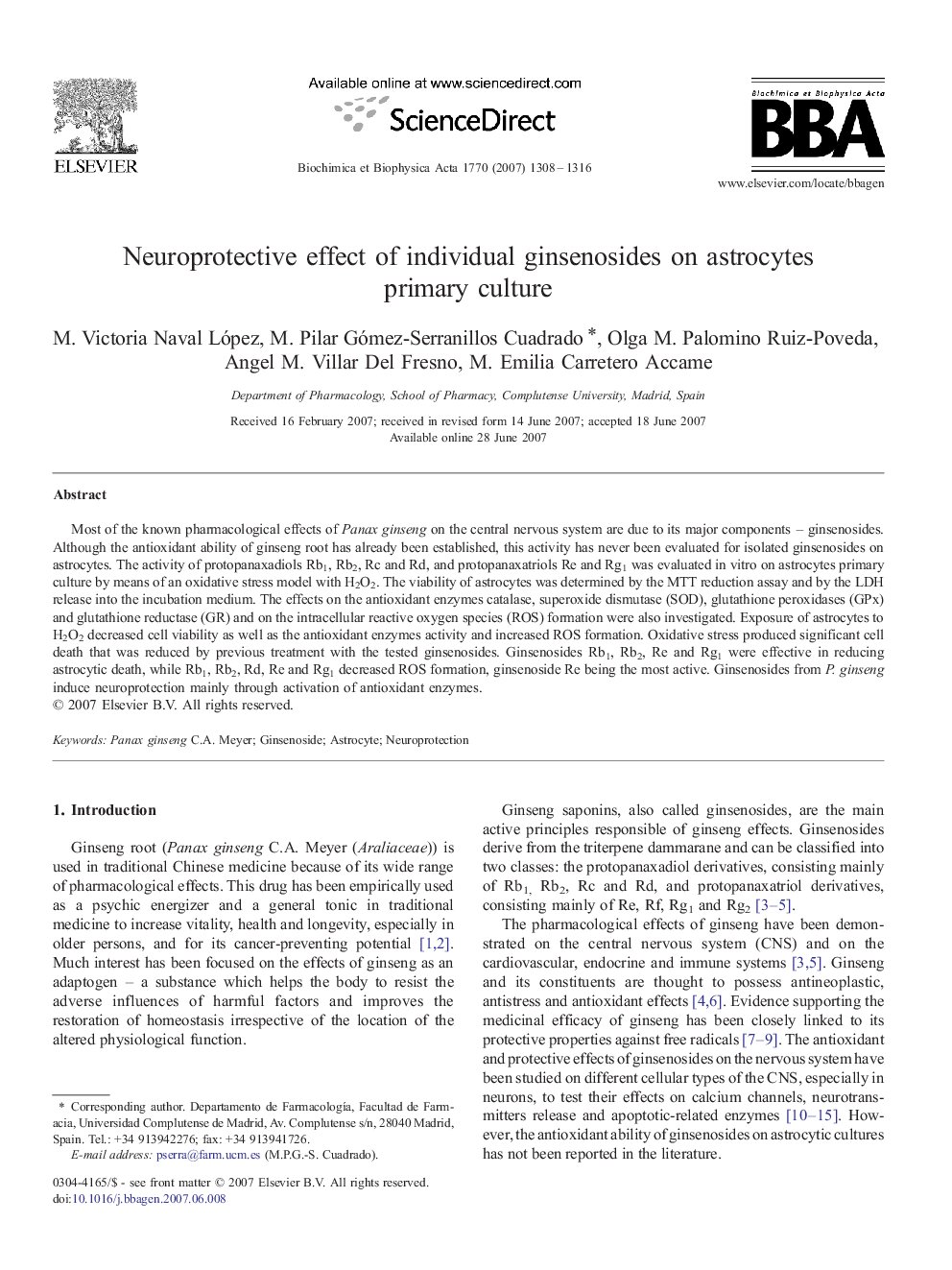| Article ID | Journal | Published Year | Pages | File Type |
|---|---|---|---|---|
| 1948517 | Biochimica et Biophysica Acta (BBA) - General Subjects | 2007 | 9 Pages |
Most of the known pharmacological effects of Panax ginseng on the central nervous system are due to its major components – ginsenosides. Although the antioxidant ability of ginseng root has already been established, this activity has never been evaluated for isolated ginsenosides on astrocytes. The activity of protopanaxadiols Rb1, Rb2, Rc and Rd, and protopanaxatriols Re and Rg1 was evaluated in vitro on astrocytes primary culture by means of an oxidative stress model with H2O2. The viability of astrocytes was determined by the MTT reduction assay and by the LDH release into the incubation medium. The effects on the antioxidant enzymes catalase, superoxide dismutase (SOD), glutathione peroxidases (GPx) and glutathione reductase (GR) and on the intracellular reactive oxygen species (ROS) formation were also investigated. Exposure of astrocytes to H2O2 decreased cell viability as well as the antioxidant enzymes activity and increased ROS formation. Oxidative stress produced significant cell death that was reduced by previous treatment with the tested ginsenosides. Ginsenosides Rb1, Rb2, Re and Rg1 were effective in reducing astrocytic death, while Rb1, Rb2, Rd, Re and Rg1 decreased ROS formation, ginsenoside Re being the most active. Ginsenosides from P. ginseng induce neuroprotection mainly through activation of antioxidant enzymes.
